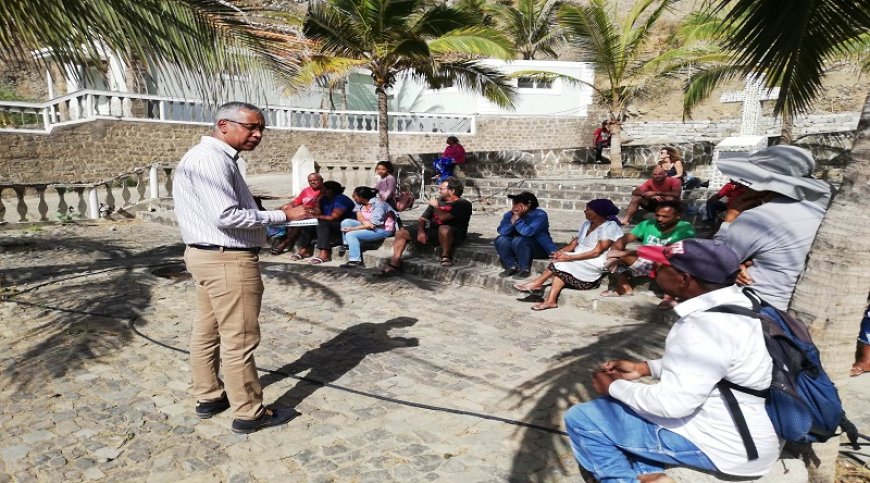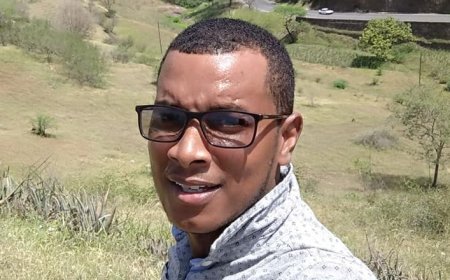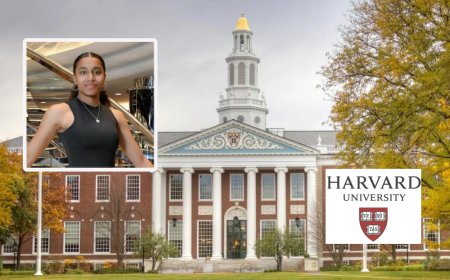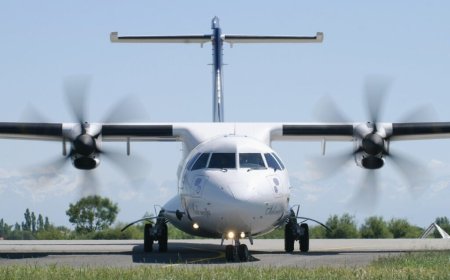Brava: Fajã d´Água already has a pedestrian path that allows people to circulate with “greater safety”
The community of Fajã d´Água already has a pedestrian path that allows residents and visitors to circulate safely, pending a solution for car circulation.

The community of Fajã d´Água already has a pedestrian path that allows residents and visitors to circulate safely, pending a solution for car circulation.
This information was provided to Inforpress by the mayor of Brava, who took advantage of the occasion and met with the residents of the community to find out about the situation they have been experiencing in the locality, after the landslide that left the village completely isolated since the last January 21st.
As Francisco Tavares said, “it is with great satisfaction” that he saw this road completed, a satisfaction that is also visible and demonstrated by residents, as it guarantees safe pedestrian circulation.
According to the same source, this was a partnership project between Estradas de Cabo Verde, the Municipality of Brava, together with José Andrade's company, who in record time of three and a half weeks managed to build this access that will greatly facilitate movement of people to and from Fajã d´Água.
During the meeting, the population ended up identifying some concerns and difficulties that they are facing in the area, due to not having access by car, such as the concern with the treatment of garbage, debris, among other situations.
Likewise, they spoke of a certain apprehension in relation to access to health for older people who have some difficulty walking on this vicinal path.
As reported by the mayor of Brave, in consultation with the Health Police, an agreement was reached in which residents now have periodic medical consultations in the locality.
Likewise, in this area, Francisco Tavares announced that he intends to analyze, together with the Civil Protection, the possibility of having stretchers and training available in the area so that, if necessary, the population can support the transport of people on stretchers, through the neighboring path to reach the road, where the car can transport them to the health station.
Regarding the road and the reconstruction of the section, Francisco Tavares informed that there is still no certain date for the conclusion of the section of road and that it could thus allow the circulation of cars.
The mayor advanced that not even the company in charge of the work can specify a date, but that the machine is working on the path to reach the most critical part of the rock, cause its collapse and then proceed with other steps.
On the part of the residents, Eugénia Tavares, resident in Esparadinha, a village in the town of Fajã d´Água, located about two kilometers from the center, demonstrated her satisfaction with the pedestrian route, but also made clear her concern and difficulty in reaching in the center of Fajã to go up until reaching the road, which has been a bit complicated.
This resident said that if she wants to travel to the city of Nova Sintra, she has to get up around 5:00 in the morning, in order to reach the road without the scorching sun.
"The side path is great, but for the elderly it still presents some degree of difficulty, because going up, don't go, but going down is very careful not to fall and hurt yourself, especially for those who have knee problems", justified.
Likewise, he lamented the situation of children who, in order to study in the city of Nova Sintra, face some difficulties, with those who live in Esparadinha and who study in the morning having to leave home early, as well as those in the afternoon, but these arrive home already accompanied, at dusk, around 19:00.
“The hope is that the machine will be able to reach the most critical part of the rock and then be able to fill the stream to make a road, even if it is dirt, to allow the entire population to be transported by car, but also to shorten the students and elderly people from Esparadinha the two kilometers they have to walk to reach where there is car circulation after the landslide”, he concluded.



















































